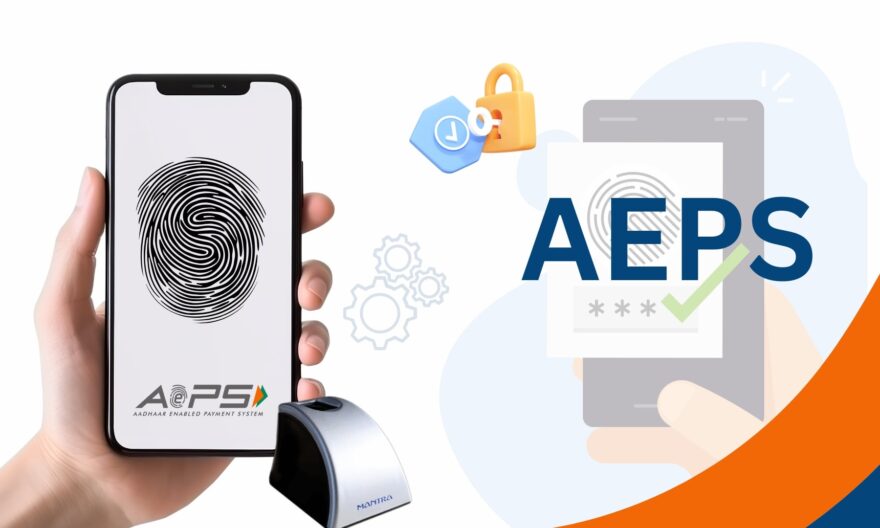
With the expanding virtual world, financial services cannot be an extravagance but a compulsion. But rural populations lag behind in utilizing services of traditional banks. And here lies the opportunity where Aadhaar Enabled Payment System (AEPS) is a game-changer. Rooted in Aadhaar, the biometric identification system of India, AEPS is transforming rural mass financial inclusion and delivering banking at the doorstep of the eligible.
Understanding AEPS
Aadhaar Enabled Payment System (AEPS) is a banking facility based on Aadhaar unique identification number for banking. National Payments Corporation of India (NPCI) is developing it to make banking facility easily accessible in rural regions where traditional banking infrastructure will not be there or will be limited.
Key Features of AEPS:
– Biometric Authentication: AEPS uses biometric data, say fingerprints, linked to a person’s Aadhaar card, which is a secure and authentic means of authentication at the time of transactions.
– Simple Banking Services: Clients can perform basic banking operations such as cash deposit, cash withdrawal, balance checking, and funds transfer from one bank account to another using AEPS.
– Interoperable Platform: AEPS is designed to operate between banks. Interoperability enables customers of various banks to conduct transactions easily at AEPS-enabled points of service.
– Agent-Based Model: AEPS operates through banking correspondents or agents, who are typically equipped with a device to make transactions via biometric authentication.
The Role of AEPS in Rural Banking
AEPS has been a revolution in taking banking to unbanked masses. Rural areas are especially difficult to reach in terms of banking infrastructure and unbanked masses. AEPS addresses these issues directly:
– Enhanced Accessibility: With AEPS, the necessity to travel to distant locations or depend on physical banks is removed. Village banking agents provide doorstep banking, and transactions are a breeze and at one’s fingertips.
– Growth of Cashless Economy: By allowing digital transactions, AEPS promotes the growth of a cashless economy even in rural areas. This transition not only introduces efficiency but also reduces the risk of carrying money.
– Overcoming the Digital Divide: Internet penetration is low in some areas, but AEPS relies on Aadhaar for authentication, which does not necessarily involve internet penetration. This feature becomes significant in connectivity-poor areas.
– Building Trust: Biometric authentication through AEPS builds trust with users who would be cautious of other digital transactions.
AEPS vs UPI Payment
While AEPS is an excellent financial inclusion tool, it must be distinguished from the UPI payment system, another innovative financial inclusion tool in the Indian digital payment ecosystem.
– Technology and Access: UPI payment requires a smartphone and internet, while AEPS is able to operate on low-level verification technology, thus suitably positioned to operate in rural markets with minimal digital infrastructure.
– Use Cases: AEPS employs essentially simple banking transactions through biometric verification. UPI, on the other hand, facilitates varied digital payments from bill payments to online transactions, mainly for urban and semi-urban customers.
– User Base: AEPS covers the unbanked and rural customer through Aadhaar as a primary identification method. UPI, however, is more popular among the urban, digitally enabled population with smartphone access.
How AEPS Works: A Step-by-Step Guide
Here is a quick overview of how AEPS functions:
- Aadhaar Enrollment: You must enroll for an Aadhaar card, which includes biometric data such as fingerprints or iris scans.
- Bank Account Linkage: The Aadhaar number must be linked with the person’s bank account for using the services of AEPS.
- Visit to a Banking Correspondent: The customer visits an AEPS-enabled banking correspondent with a micro ATM or such a terminal.
- Initiation of a Transaction: The customer enters the Aadhaar number and selects the type of transaction to be initiated, i.e., cash withdrawal, deposit, or balance inquiry.
- Biometric Authentication: The customer authenticates the transaction by placing a thumb or a finger on the biometric reader.
- Completion of the Transaction: After authentication, the transaction is completed and a message is communicated to the customer.
Challenges and Future Prospects
Challenges:
– Connectivity Issues: Despite the low connectivity capability of AEPS, rural network issues occasionally interfere with smooth transactions.
– Security Issues: Despite biometric security, data security and user information privacy are issues of concern.
– Awareness and Uptake: Generation of awareness among rural people and trust establishment are challenging but necessary for widespread adoption.
Future Prospects:
– Technological Upgrades: As technology upgrades, AEPS can be even more effective, with options such as voice recognition for authentication.
– Government Policies: Government policies supporting digital banking services can assist AEPS in realizing its full potential for financial inclusion.
– Integration with Other Systems: Integration of AEPS with systems such as UPI payment and mobile banking services can assist in creating an integrated financial system, connecting the rural-urban divide in banking services.
Overall, AEPS is a powerful tool in reaching the financial services of the rural economy of India, overcoming geography and infrastructure challenges. With technology still upgrading, and with supportive government policies, the reach and scale of AEPS are set to expand, resulting in a more inclusive and digitally empowered society.






